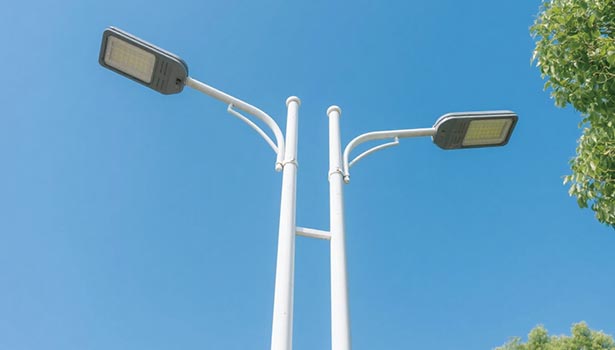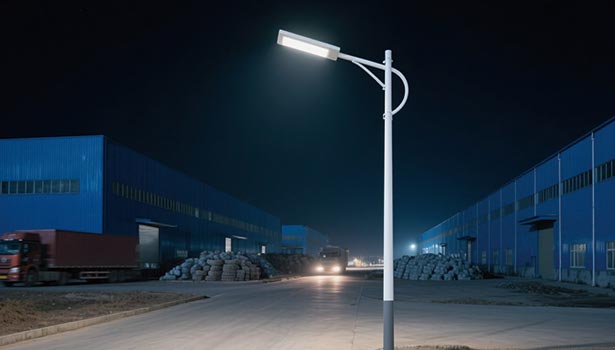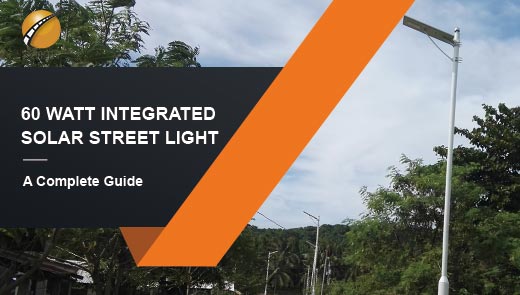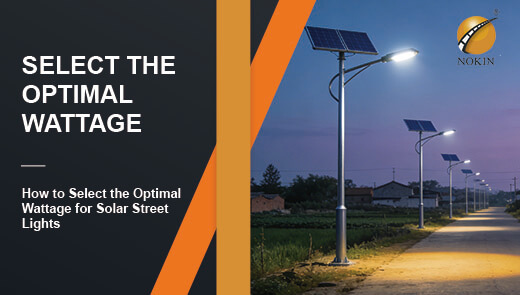Do 400-Watt All-In-One Solar Street Lights Actually Exist?
In the application field of solar street lights, the power size is often directly related to the lighting effect and applicable scenes. The 400-watt all-in-one solar street lights, with their possible powerful lighting ability, have become the focus of attention of many large places. So, does 400 watt integrated solar street light really exist? Next, we will explore this issue from the market status, technical challenges, verification methods and other aspects.

Market Status of 400 Watt Integrated Solar Street Lights
Existing Power Range In the Market
Currently, the power coverage of integrated solar street lights in the market is wide, ranging from 20 watts to 400 watts. Among them, most of the commercial products are concentrated in the power range of 60-200 watts. This power level can meet the lighting needs of residential streets and medium traffic areas, and is more commonly used in daily urban lighting.
Existence and Market Supply of 400 Watt Products
Although 60-200 Watt products are the mainstream of the market, advanced manufacturers have successfully developed 300-400 Watt integrated solar street light models. These high power products are not designed for general scenarios, but specifically for areas with high light requirements such as highways, large parking lots and industrial sites.
Keeping these high-power systems running stably is no easy task. They require sophisticated thermal management systems to cope with the heat dissipation problems associated with high power, large solar panels to ensure energy supply, and quality battery configurations are essential to ensure continuous and stable lighting at night.
However, the supply of authentic 400 watt integrated solar street lights is very limited in the market. Only those specialized manufacturers, with their advanced technology and production capabilities, can offer proven high power solutions. However, there are some irregularities in the market. Many suppliers are misrepresenting power in order to attract customers. What they claim to be a 400-watt system can be independently tested and found to be significantly lower than the claimed light output.
Proof of Legitimate Manufacturers and Prices of 400 Watt Products
Legitimate manufacturers of 400 Watt integrated solar street lights will prove the performance of their products in various ways. They will provide detailed photometric reports that clearly show how the street light is illuminated, thermal analysis data that illustrates its heat dissipation performance, and third-party certifications that prove that the product's actual power and performance meets the claimed standards. High-quality manufacturers often offer customization options that allow customers to specify solar panel size, battery capacity, and control features according to their specific needs, making the product more relevant to actual usage scenarios.
True 400 watt integrated solar street lights are more costly, usually in the range of $800-$2,000 per unit. This price level actually reflects the precision components and high level of engineering required to operate reliably in complex outdoor environments. These investments are made to ensure that the product will perform consistently in a variety of harsh conditions.

Technical Challenges Behind 400 Watt Integrated Solar Street Lights
Thermal Management Issues
As LED power increases, heat dissipation becomes a challenge that must be overcome for 400-watt integrated solar street lights. When the power reaches 400 watts, the heat generated by the LED work increases dramatically, and if it cannot be dissipated in time, it will seriously affect the service life of the street light and the lighting effect.
For this reason, an advanced thermal management system is required, which includes highly efficient heat sinks, high-performance thermal interface materials, and optimally designed housings. These components cooperate with each other in order to export the heat in time and ensure the normal operation of the street light.
Solar Panels and Battery Requirements
400 watt integrated solar street lights have much higher energy requirements than lower power products. This requires large solar panels, typically 150-200 watts, to generate enough energy to run the high power LEDs. At the same time, these panels have to be installed in a way that maintains the compactness of the street light, which makes the design even more demanding.
On the battery side, the capacity requirements increase proportionally. A lithium-ion battery system with a capacity of 200-400Ah is typically required to ensure reliable illumination at night and to avoid power failures.
Structural Integrity Requirements
As the power of a 400 Watt integrated solar street light increases, so does its overall size and weight. This makes structural integrity critical. If the structure is unstable, it may not only affect the normal use of the street light, but also bring about potential safety hazards. Therefore, a reinforced mounting system is required to ensure that the street lights can be securely mounted in the appropriate locations. At the same time, wind-resistant design is also essential to effectively cope with inclement weather such as high winds and ensure the safety of street lights.
It is due to these engineering complexities that true 400W integrated solar street lights are relatively rare in the market. Moreover, in order to meet these technical requirements, the components used and the design costs are high, which makes the price of the 400W integrated solar street light relatively expensive.
How Do You Verify The Actual Power Output Of Integrated Solar Street Lights?
Test Methods and Equipment Requirements
Confirming the actual power output of an integrated solar street light requires professional-grade test equipment and a standardized measurement procedure. Standardized measurement procedures are required. In the laboratory, photometric tests can be performed using integrating spheres or goniophotometers to accurately measure key data such as total luminous flux, light distribution patterns and actual power consumption in a controlled environment.
When testing in the field, a more diverse set of equipment is involved. Illuminance meters measure light intensity, power analyzers monitor power variations, and thermal imaging cameras assess the heat dissipation of street lights under different environmental conditions, providing a comprehensive view of the actual performance of street lights. In addition, independent testing laboratories can also provide important help. They offer certification services to validate manufacturers' claims about integrated solar street lights' power output, efficiency ratings, and compliance with international lighting standards.

Documentation And Certification Standards
Reliable manufacturers of integrated solar street lights provide comprehensive documentation. This includes photometric reports, electrical specifications, etc., which show the product's performance parameters in detail. Third-party certification is also essential as it is a strong proof of the product's performance.
There are clear industry standards, such as the IES (Illuminating Engineering Society) standard that defines test procedures for LED lighting systems, and the solar industry standard that regulates the performance of photovoltaic modules in integrated solar street light applications. Manufacturers with assured quality, who proactively submit their products to accredited laboratories for testing and appropriate certifications to confirm power output, efficiency ratings and safety compliance. These documents should also include detailed specifications such as LED chip type, driver efficiency, solar panel power, and battery capacity. Comprehensive certification not only demonstrates the manufacturer's commitment to product quality, but also gives buyers more confidence in product performance.
Performance Monitoring and Verification
Long-term performance monitoring is the most reliable method of verifying the power output claims of integrated solar street lights under actual operating conditions. Through continuous monitoring, you can understand the performance of the street light in different time periods and seasons.
Remote monitoring systems play an important role in tracking real-time data on street light energy consumption, light output levels, battery performance, and solar charging patterns. This data is recorded and analyzed to help identify seasonal performance variations, patterns of efficiency degradation, and discrepancies between actual power output and manufacturer's specifications.
During the initial installation of the street lights, professional commissioning services verify system performance to ensure that it is optimally configured and that any discrepancies between claimed and actual power outputs are detected in a timely manner. Ongoing performance verification helps identify maintenance needs and optimize system settings to ensure that the street lights continue to deliver the specified power throughout their lifetime.
Two Major Reasons High-Power Solar Lights Are Not Common
Excessive Cost
The 400W LED module is a big leap in power consumption. To keep them running at night, they need batteries capable of storing several kilowatt-hours of power. Current battery technology, especially high-capacity batteries, is relatively expensive. At the same time, in order to fully charge such a battery in a single day, solar panels with a capacity of at least 800W would be required. The increased capacity of the solar panels directly increases the overall cost.
Practical Limitations and Safety
The size and weight of the components of a high power solar street light pose practical installation limitations. The large size of the panels and the heavy weight of the high-capacity cells make mounting them on tall poles a high challenge to the pole's structure. If the foundation is not reinforced, the light pole is likely to be blown over in strong wind conditions.
Moreover, high-capacity batteries require proper ventilation during use to ensure their proper functioning and safety. It also requires regular maintenance. If the high-capacity battery is not installed properly, it may cause fire and other safety hazards.

Application Scenarios for 400 Watt Integrated Solar Street Light
Special Industrial Needs
In some industrial places, extremely high lighting levels are required for safety reasons. In this case, a single large 400 Watt solar street light may be able to meet the overall lighting requirements better than multiple smaller street lights, while also reducing installation and maintenance complexity.
High Solar Irradiance Areas
In areas with very high solar irradiance, such as deserts, enough solar energy can be collected to support the operation of a 400-watt solar street light. However, even in such areas, the upfront cost of a 400 Watt solar street light is still high.
Pilot Projects or Experimental Uses
Some research institutes or specialized companies, in order to explore the technological boundaries of solar street lights, may conduct related pilot projects or experiments. They will build large-scale prototypes of 400 Watt solar street lights and conduct various tests and studies to advance the technology.
The 400-watt integrated solar street light does exist, but its supply is scarce due to the high technological threshold and cost, and it is only suitable for special scenarios such as industrial sites and high sunlight areas. At present, it is still a niche high-end solutions, with technological progress in the future or a wider range of applications, but the choice of the need to be vigilant about false labels, recognize the formal manufacturers and certification.




